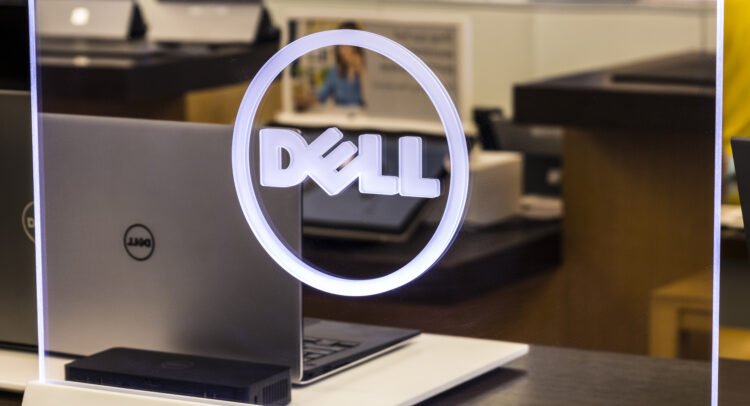The demand for personal computers saw a noticeable increase in the first quarter of the year as businesses and individual consumers placed more orders. This rise is largely due to the anticipation of new tariffs on imported goods, compelling many to secure their electronics before prices could go up. Major players in the PC industry, Dell Technologies and HP Inc., have experienced this surge alongside companies involved in the production of PC components.

Despite geopolitical challenges and the potential impact of tariffs on imported electronics, the personal computer market experienced significant growth. With about 63 million units shipped during the early months of the year, the industry’s uptick reflects a proactive market response. Both consumers and corporations have taken action to avoid the anticipated costs, with PC shipments exceeding a 9% increase according to recent research.
Key Takeaways
- The PC market saw a sharp rise in orders as tariffs loomed.
- Dell and HP are among the beneficiaries of the recent PC shipment growth.
- The proactive market response contributed to the considerable increase in PC shipments.
Return to Growth

After a period of stagnant sales, the PC market is experiencing a noticeable increase. Early in the year, from January to March, sales showed robust growth, indicating a renewed interest in both desktops and notebooks. Specifically, the number of notebooks shipped jumped to over 49 million units, marking a 10% growth. Desktop shipments weren’t far behind, with an 8% rise.
These numbers suggest a positive shift, considering the mere 1% increase in worldwide PC shipments in 2024. The recent growth could signal a refreshed appeal of personal computers to consumers. However, there is discussion on how new tariffs could affect the future demand, with significant levies on imported goods hinting at potential market challenges. Despite this, PC market share is expanding, painting a promising picture for PC shipments after years of downturn.
Assessing Dell Technologies’ Investment Potential

Analysts appear to collectively agree that purchasing shares of Dell Technologies carries promising potential. Respected voices in finance, from a pool of 14, mostly agree that the company holds a strong position, with 11 endorsing the stock with a buy status and the remaining three suggesting investors should maintain their current shares. Looking ahead, they anticipate a significant increase in Dell’s value, with projections indicating the potential for a 60% rise to an average target price of $134.39. It’s this optimism that frames the current assessment of Dell’s stock as an attractive investment opportunity.
Common Questions Addressed
Reasons Behind Increased PC Shipments from Dell and HP
During the first part of the year, Dell and HP experienced a surge in the number of personal computers sent out to customers. This boost can be traced back to several factors. A higher demand for laptops and desktops, which can be linked to ongoing trends in home-based work and learning, played a critical role. It’s also noted that technological advancements and the need for updated equipment could have driven sales upwards.
Market Share Developments for Dell and HP Post-Growth in Shipments
The successful quarter for Dell and HP didn’t just mean more units sold; it also affected their standing in the PC market. Both companies saw their slices of the market pie grow. The impressive shipment numbers suggest not only an increase in production but also a shift in consumer choices, likely due to the companies’ reputations for reliability and performance.
Strategic Moves by Dell and HP to Boost Shipments
To address the increased demand, Dell and HP made several strategic moves. These moves include optimizing their supply chain, refining their product lines with frequent updates to meet the latest user needs, and employing aggressive marketing to attract buyers. They may have also expanded their online and retail presence to improve accessibility for consumers.
Influence of Remote Work and Learning on Dell and HP PC Sales
The shift to remote work and online education formats has resulted in a greater need for personal computing devices. Dell and HP have seen their sales numbers climb as people outfit home offices and students gear up for virtual classrooms. The durable, performance-focused computers from these brands meet the demands of these new work and study environments.
PC Shipment Performance of Dell and HP Versus Competitors
When comparing Dell and HP to other brands in the market, their shipment numbers for the quarter stand out. This indicates that while the PC industry, on the whole, is seeing a rise in demand, Dell and HP are at the forefront, perhaps suggesting that their products and services are resonating well with consumers.
Future Projections for Dell and HP PC Shipments After Q1
Looking to the rest of the year, forecasts for Dell and HP are positive, based on their first-quarter performance. As they continue to ride the wave of increased PC demand, their focus on innovation and consumer needs may keep their shipment numbers on an upward trajectory, barring any unforeseen market shifts.
Surge in Q1: Dell, HP, and Logitech Lead the Charge**
In a surprising twist amid global supply chain challenges, the personal computer industry has witnessed a notable resurgence in the first quarter of the year, with leading tech giants Dell Technologies (NYSE: DELL), HP Inc. (NYSE: HPQ), and Logitech International (NASDAQ: LOGI) at the forefront of this growth.
According to recent reports, the first quarter saw an uptick in shipments, defying earlier projections and showcasing resilience in consumer demand. This growth can be attributed to a combination of factors, including increased remote work, ongoing hybrid learning environments, and an overall heightened dependency on robust computing solutions.
Dell, a significant player in the personal computer market, reported a substantial increase in its shipment volumes. The company’s focus on adapting its product line to cater to various consumer segments—from gaming enthusiasts to enterprise clients—played a pivotal role in bolstering its market presence.
Likewise, HP also experienced a significant rise in shipments. The company benefited from its diversified product offerings, which cater to both the commercial and consumer markets. Innovations in design and a continued emphasis on sustainability have helped HP maintain an edge in the increasingly competitive sector.
Logitech, primarily known for its computer peripherals, saw increased demand for products that complement the burgeoning PC market. As home offices and e-learning setups became more prevalent, Logitech’s portfolio of webcams, keyboards, and mice became essential tools for productivity.
Industry analysts suggest that the renewed growth in personal computer shipments is likely to continue throughout the year, albeit at a potentially moderated pace. However, the pressures from global supply chain disruptions and semiconductor shortages remain challenges that could impact future growth.
The strong performance of these companies underscores a broader tech industry trend of adapting to new consumer behaviors. As remote and flexible work arrangements become more common, the demand for personal computing devices and accessories is expected to stay robust, driving continued innovation and competition in the sector.
In conclusion, the




































